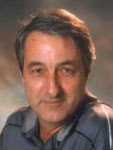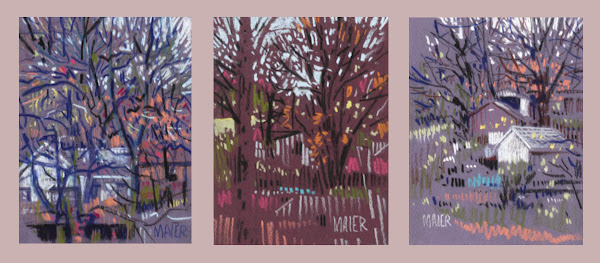People will often complement me on my"style", or sometimes, if that person is also an artist, they might say that they like my "approach" to painting. Many people will say to me, whether they like my work or not, that they can always tell my paintings apart from other artists, having a distinct style. A distinct style is something I think every artist strives for and I love hearing comments like this. A big part of what I do is to abstract shapes into a visual shorthand, but that is the topic for another blog entry.
In thinking about this style question, I began thinking about the reasons for a distinct style. Is style a function of the artist's ability, talent and training? If a person can always tell your work from others, does that mean you have a style that is unique to you, or perhaps your in a rut and afraid to venture out and try new things. After all, I turned 60 a few months ago, and I would rather not use an old retread like "old dog learning new tricks". I don't by that on anyway, Two years ago I was not using the Internet, however in the past two years I have become quiet adept at using it. I can actually say that it has changed my life... but that is yet another story for another time and blog entry... so I will not digress any longer.
I consider myself a purist, at least as an artist. For instance, in watercolor I do not use opaque white or pencil and will seldom scratch the paper or blot it to remove color. White is always pure virgin paper. These are rules I set for myself. As a teacher for ten years at Bauder College in Atlanta, I remember telling my first year Color and Design students that in art there are no "rules".... but we do have "guidelines". . . principles that make-up the foundation of visual design. I taught from a text book and have often pondered this statement. These guidelines are basic principles that will help everyone become better artists, however rules that we set for ourselves, will regulate the outcome or appearance of our work, or our "style". Of course there are other factors at work here such as the subject matter, media and attack of the brush to canvas or pencil to paper. But as I thought about my work and how my style evolved, I began to realize it was largely due to many of the rules I set down for myself to follow... and they can be change at anytime! I call them "Rules of Engagement"... and the term came from the word "attack" when describing a hurried brush stroke used when painting on location and the piece needed to be done very quickly before the sun changed too much. So painting plein air, on location, is a factor (rule) that changes the look of your work. Early on I realized this and used the same hurried approach when painting from photographs. Previously, I could always tell a plein air painting from one done from a photo, but after I began using the same approach as I used on location, they were indistinguishable.
Some other rules of engagement I use regularly are never to use graphite pencil to draw on my watercolor paper, instead using large brushes to block in areas of color isolating the white paper, which more often than not will become my focal point, something I learned from Andrew Wyeth's work. One way of creating a focal point is high contrast, and there is no greater contrast than black on white, so I often look for white objects to paint. Another way to affect the look of your work that is very effective is to limit your pallet. Try using only 8 colors, or 4 colors, or even two colors, such as the complementary colors of blue and orange, or red and green. The whole range of neutral shades that can be derived from these combinations is wonderful... something I learned from Remington's illustrations.
Yet another example of my rules of engagement comes from a life drawing session while teaching that dealt with contour vs gesture drawings. These two extremes of drawing, contour drawing being very slow, deliberate drawing of the outline edge of the subject done over a 20 minute sitting, vs the gesture drawing, which is a quick hurried sketch of the figure to show movement, done in 20 seconds. This is a perfect example of how the rules you set for your work will determine the final appearance. Try drawing the talking heads on TV. You will only have a few seconds or minutes to study the face and put it on paper. I recommend CSPAN, since they stay on the speaker for a longer time generally. Here is another one I tried out recently... I did a series of quick thumbnail sketches while at a red traffic light. I limited my drawing surface to the backs of business cards (2x3,5") and using a pen, so there is no erasing and going back to "do over". The drawing was finished when the light turned green or when the guy behind you honked his horn. This defiantly heightens the urgency of the on location experience... Maybe to push it to an extreme, I could do this while sky diving from an airplane. Oh, forget it... I am scared of heights! Back to the drawing board.



